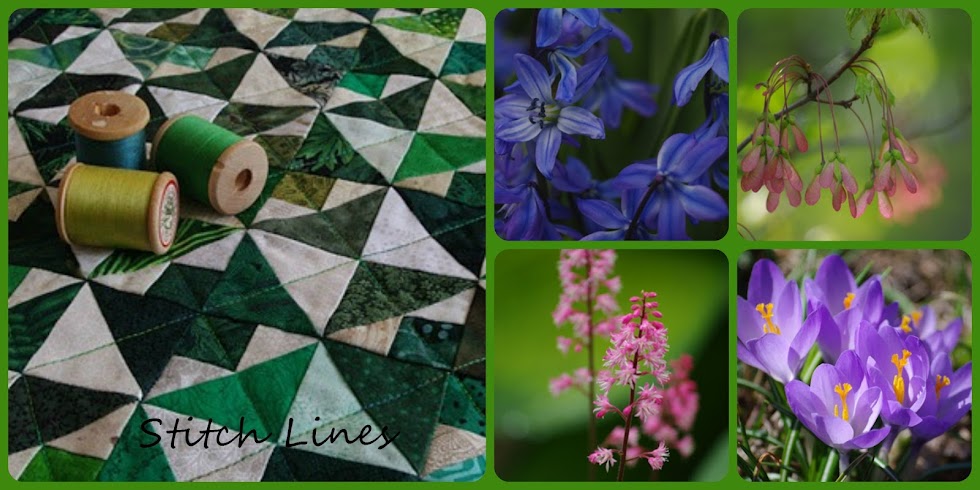 Yup- Lupin Love. That's what it is... June brings droves of lupins to the highways and fields of the Maritimes. Purples, blues, pinks, mauves and whites are the most common colors, but you might also find yellows, peaches, and red-burgundies. They can be solid or bi-color. You will find lupins in fields, ditches, along highways and backroads and in gardens. Are you familiar with the children's story "Miss Rumphius" by Barbara Cooney? Alice Rumphius believed with all her heart that everyone should do something to make the world more beautiful, and her way of accomplishing that goal was to sow lupin seeds all over the countryside. I think she must have passed through the Maritimes as they certainly are abundant in this area. Lucky us!!
Yup- Lupin Love. That's what it is... June brings droves of lupins to the highways and fields of the Maritimes. Purples, blues, pinks, mauves and whites are the most common colors, but you might also find yellows, peaches, and red-burgundies. They can be solid or bi-color. You will find lupins in fields, ditches, along highways and backroads and in gardens. Are you familiar with the children's story "Miss Rumphius" by Barbara Cooney? Alice Rumphius believed with all her heart that everyone should do something to make the world more beautiful, and her way of accomplishing that goal was to sow lupin seeds all over the countryside. I think she must have passed through the Maritimes as they certainly are abundant in this area. Lucky us!!If you'd like to add some lupins to your garden, here are a few tips from Lois Hole's Perennial Favorites. Lupin seed needs to be scarified (scratched or scraped) because it has a hard coat that inhibits germination; the seeds wi
 ll not sprout until moisture can penetrate the seed coat. If you are going to start the seed indoors, gently scrape the seeds between a folded sheet of medium-grade sandpaper. Sow in February or March, expect germination in 4-5 days. Outdoors, sow as late as possible in fall, even early to mid-November. The action of the frost will break down the hard seed coat. Lupins prefer full sun to partial shade. Lupins dislike acidic soil, so have your soil tested; dolomitic lime is great for sweetening acidic soil. (They do well in poor or alkaline soil.) They also dislike water-logged soil so do not plant them where puddles form from rainfal or spring snowmelt.
ll not sprout until moisture can penetrate the seed coat. If you are going to start the seed indoors, gently scrape the seeds between a folded sheet of medium-grade sandpaper. Sow in February or March, expect germination in 4-5 days. Outdoors, sow as late as possible in fall, even early to mid-November. The action of the frost will break down the hard seed coat. Lupins prefer full sun to partial shade. Lupins dislike acidic soil, so have your soil tested; dolomitic lime is great for sweetening acidic soil. (They do well in poor or alkaline soil.) They also dislike water-logged soil so do not plant them where puddles form from rainfal or spring snowmelt.Deadheading will extend flowering. Lupins self-seed readily, but the seedlings often revert to purple or white. They are a short-lived perennial, usually losin
 g their vigour after 3-4 years. For a continuous show of flowers in your garden, addd a few new plants every second year. Do not divide- they have a long taproot and don't take well to being moved. They perform well as a cut flower for bouquets, usually lasting 7-10 days after cutting. Deer will not eat lupin so they are a good choice if you have a problem with deer munching on your plants...
g their vigour after 3-4 years. For a continuous show of flowers in your garden, addd a few new plants every second year. Do not divide- they have a long taproot and don't take well to being moved. They perform well as a cut flower for bouquets, usually lasting 7-10 days after cutting. Deer will not eat lupin so they are a good choice if you have a problem with deer munching on your plants...I have been out several times in the last week looking for patches of lupins. Laura accompanied me one day as we travelled through New Maryland on the way to Rusagonish (on another "photo mission" - more about that later). Some of these photos are from there, others are from Corn Hill N.B. I hope you will enjoy my photographic efforts...
And to my friend Gail, my "Blogger Support" buddy, whose birthday is today - bouquets of lupins to you, my dear! Happy Birthday!

 Peace,
Peace,Linda
"The flower is the poetry of reproduction. It is an example of the eternal seductiveness of life."
~ Giraudoux

2 comments:
Great to know how to grow lupins.. I love your pictures... and the collage. Gail M.
I had no idea it was this complicated to grow lupins. Definitely one of my favorites as well. Love the pictures you great photographer. Lucy
Post a Comment